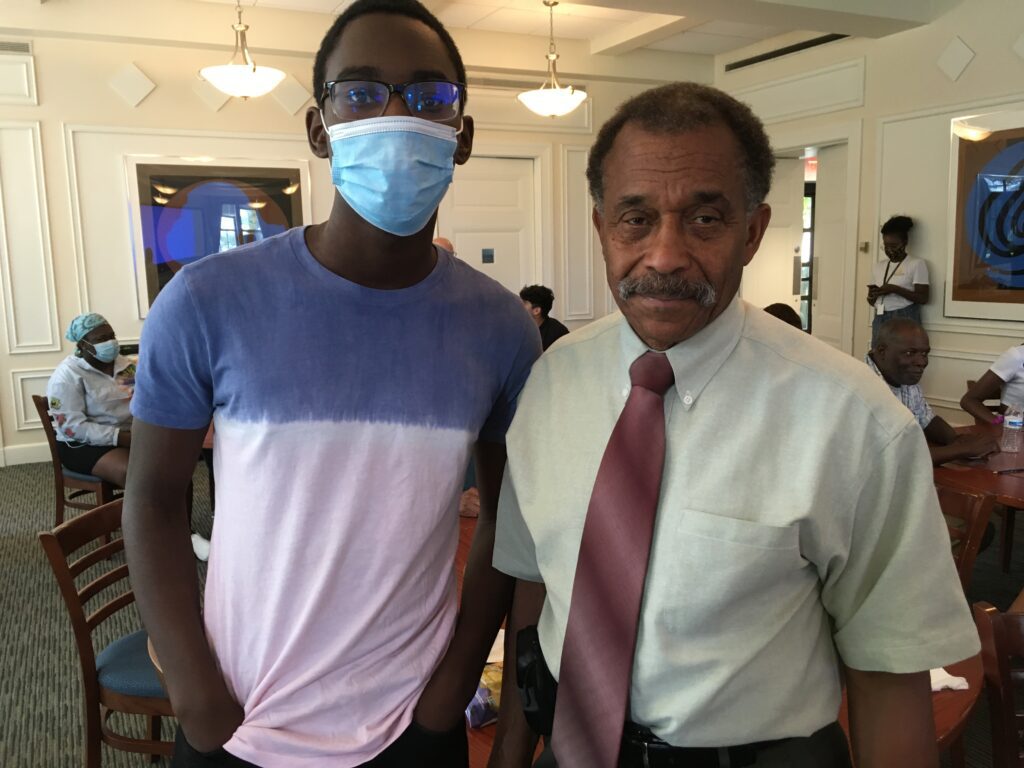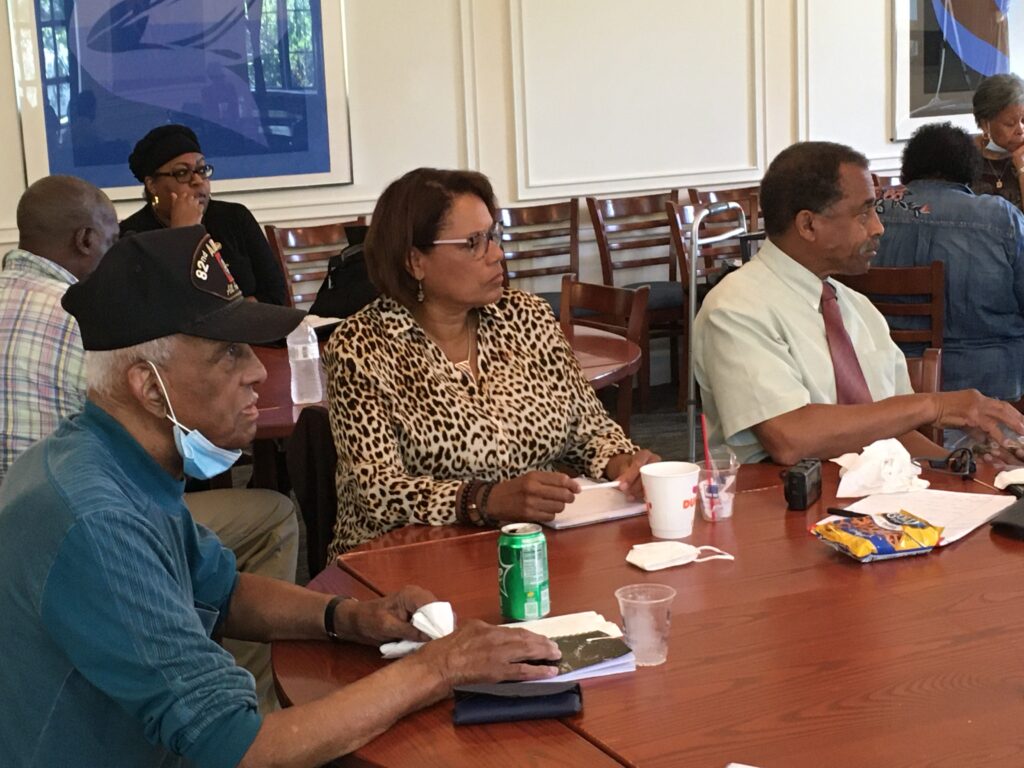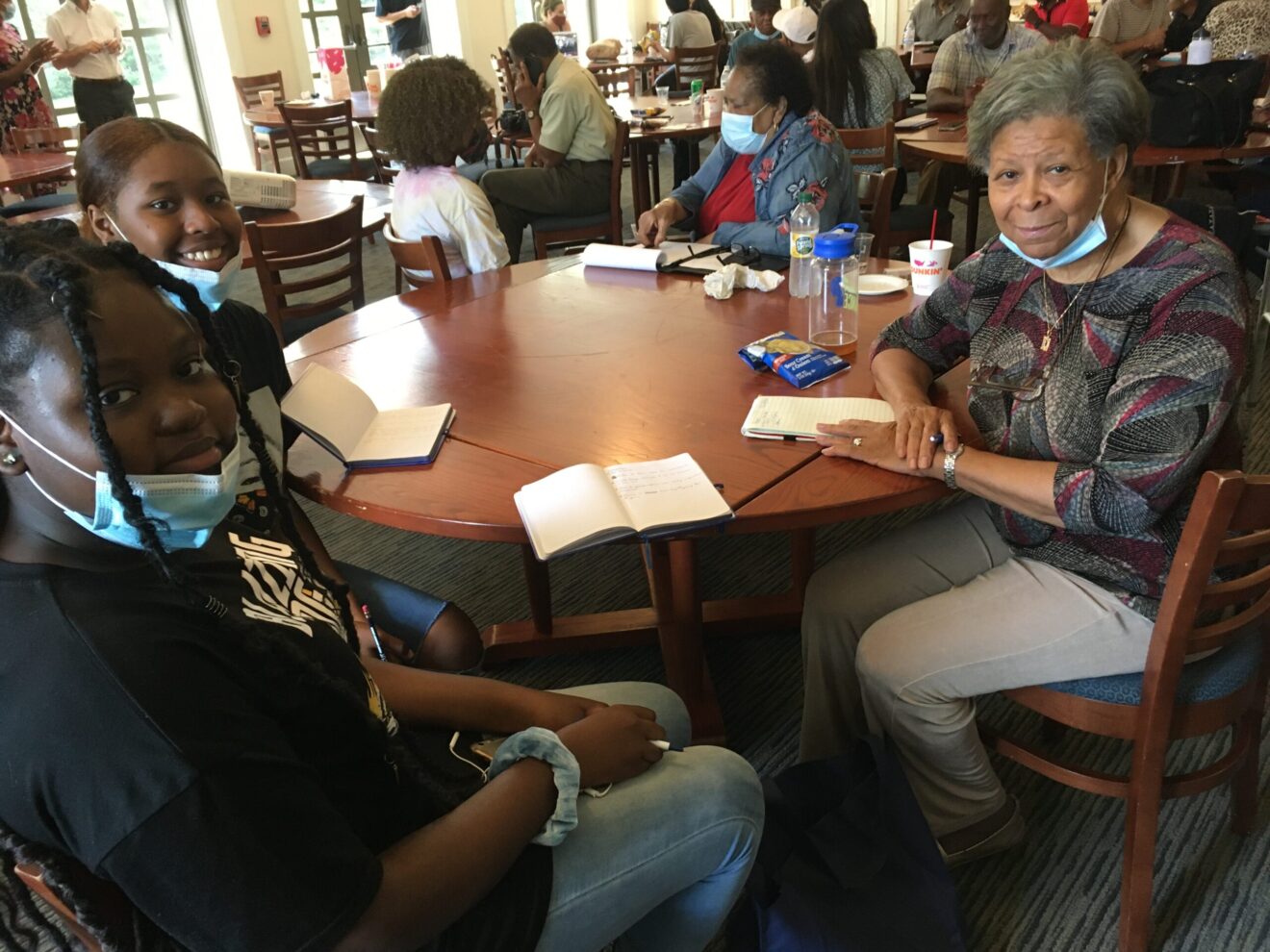When Spencer Lancaster, a World War II Army veteran, bought a house in New London in 1972, the neighbors circulated a petition to keep him out. Lonnie Braxton II, a Navy veteran who tried to buy a house in New London around the same time, watched his friends at Electric Boat get approved for mortgages while his application languished. And the summer after Donetta Hodge bought her home in Waterford in 1976, she woke up one morning to find white plastic cutlery planted all over her front yard.
These are some of the stories that older residents of color are sharing with local high school students who will be interviewing them about their life histories. The project is part of a $275,000 grant that Connecticut College received through the Andrew W. Mellon Foundation’s Just Futures Initiative, which is aimed at addressing the legacy of racism in communities across the United States.
Jefferson Singer, a professor of psychology and Nakia Hamlett, an assistant professor of psychology at Connecticut College, are running the project. They said the interviews will have a particular focus on housing discrimination in and around New London, with the hope of sharing these stories with the wider community.
Hamlett said they decided to focus on housing at the suggestion of their community partners — Antonio Vargas Jr., associate pastor of the Church of the City of New London, Jerry Fischer, retired executive director of the Jewish Federation of Eastern Connecticut, Bishop Benjamin Watts of Shiloh Baptist Church and Nicole Broadus, wellness director at New London Public Schools.

“They felt that if we really wanted to understand the legacy of racism in New London, we needed to understand how neighborhoods in housing have been affected historically,” said Hamlett.
Vargas and Fischer said that the effects of redlining and discriminatory zoning rules are still being felt today, through failed urban renewal projects and the prohibitive costs of real estate.
“What we’re seeing unfortunately is that if you had been able to buy a house in the fifth or sixth district, you could sell it [now] and make a lot of money,” said Fischer. Today, he said, it’s impossible to afford those houses, or the taxes that accompany them.
Braxton said that the Winthrop Urban Renewal Project, which began in 1962, failed to live up to the promises it made to residents. Neighborhoods where Black and brown people lived were razed, he said, and the housing improvements never came to pass.
“Some who owned houses would never own a house again,” he said.
Vargas said that a large number of minority residents in the community are now moving south because of the high cost of living, in part a result of New London’s small tax base, which leaves a small number of people to shoulder a higher tax burden.
“We want to stop that before it continues to grow and we lose the ethos of what New London is — a vibrant, diverse space,” he said. “Our hope is that these narratives will give us better insight on some of the themes historically, but also currently.”
“We picketed. We demanded.”
Lonnie Braxton and Spencer Lancaster had something in common. The houses they bought in New London were in areas that were largely off-limits to Black people thanks to redlining — policies by banks and lenders in communities across the country that denied mortgages and loans to people in neighborhoods with large Black populations.
“New London was redlined like basically any other city in the country during this time period,” said Taylor Desloge, a visiting assistant professor of history at Connecticut College. Desloge and his research assistant Madison Taylor, a senior at the college, have been studying the history of housing discrimination, racial inequality and Black activism in New London.
According to Desloge, New London saw two waves of African American migration from the Jim Crow South — one during the era of World War I, and the second around 1940. African Americans began moving into diverse working class neighborhoods until federal redlining policies of the 1930s allowed privileged individuals to move on, isolating minority populations into specific neighborhoods.

“What it would do is, it would systematically invest money in suburban white neighborhoods and disinvest from these working class, African-American and immigrant neighborhoods,” said Desloge. “So what ended up happening over time is that some of the working class people who lived in these Black neighborhoods … the white ones would be able to buy out, would be able to get a mortgage, would be able to get a secure home and would be able to move into these emerging white suburbs.”
It was these policies that gave rise to stories like those of Lancaster, Braxton and Hodge. Braxton did eventually get his mortgage application accepted, after he went to the Savings Bank of New London and inquired about what had happened. Meanwhile, his friends at Electric Boat, who were white, had already moved into their new homes.
“You couldn’t dwell on how it made you feel,” he said. “You wanted to have a little bit of progress.”
A neighborhood petition to force Lancaster from his neighborhood was ignored — he said that New London’s then-chief of police, who happened to be his neighbor, told the petitioners to “go to hell,” but a little more colorfully.
Lancaster was no stranger to racism. Born and raised in New London, he said he was active in the civil rights movement when he was young.
“We picketed. We demanded,” he said. He said that he protested at Woolworths, where Black people were not allowed to sit at lunch counters, picketed the Housing Authority, and protested minstrel shows in Waterford because they were using blackface.
At one point, after asking why New London didn’t have any Black deputies, he was offered the job of deputy sheriff. Although he didn’t really want the job, he took it “until I could get another Black person to take it over.”
“History should be OUR story”
At a lunch event on Friday, Connecticut College’s Jefferson Singer paired up 11 students with older members of the New London community. According to Singer, the students had been trained in interviewing techniques and would be beginning their formal interviews in early August.
Fifty-year-old New London resident Stephanye Clarke said that the experiences of individuals like Lancaster were eye-opening.
“To hear them talk about their run-ins with very in-your-face discrimination is in equal parts infuriating, sad and inspiring,” said Clarke.
Clarke’s mother, the Reverend Florence Clarke, is a retired pastor at the AME Zion Church. She was among the few African Americans who managed to buy a house south of the Willetts Avenue color line.
“To see the redlining maps, it made me physically ill,” said Clarke.
Clarke said that her mother is now relocating to Virginia. She said it was difficult for her mother to afford the high taxes, but also that she had experienced racism in New London.
Clarke said that one day, her mother had been walking around her neighborhood when a white woman stopped her, asked why she was walking around there and “demanded to know where she lived.”
“That’s a very 2020 way of asking for your freedom papers,” said Clarke.
Clarke said that she often “worried about our elders,” and what it must be like for them to witness the same hatred they saw in the 1950s and 60s resurface today.
“It has to be maddening for them,” she said.
Many of the community members said they wanted to participate for the sake of the students — to make them aware of the history of the area and the struggles that people of color went through.
Donetta Hodge, who found the plastic flatware in her front lawn in Waterford, said she wanted people to know the community’s history and how racism still exists today.
“I think we’re really not always aware of what’s going on in the community,” she said. “People just don’t interact.”
After the flatware incident, which was never solved, Hodge found out that her next-door neighbor had circulated a petition trying to get her removed from the neighborhood. A few years ago, she said, she was able to reconcile with that neighbor before he passed away.
Clarke said that talking with the young people about the past felt like “passing a baton.” She said that neighborhood history should be included in New London’s school curriculum. Braxton agreed, saying that young people needed to learn about the experiences of people who are often not included in the general telling of history.
“History should be OUR story — for a long time, it was HIS-story,” he said.
For the students, the project represents an opportunity to become involved with the community on a deeper level, and to learn something about a history that influenced their own lives.
Cheadlen Petit-Frère, a rising sophomore at the New London High School Multi-Magnet Campus, said she applied for the project because she was looking for a way to connect.
“I don’t usually help out in the community,” she said. “I just want to be a part of something.”
The students won’t just be listening — they will also be sharing about their own lives. This prospect was what drove Roodley Merillo, a rising senior at the New London High School Multi-Magnet Campus, to participate.
“[I want] to get my story down, of how it is being a person of color in New London,” he said. He added that he wanted to see “less division” and “more togetherness” in the city.
“Measurable actions”
Singer said the grant funding will be used to pay stipends to the students and the residents who participate in the project and to compensate their community partners. The grant will last for three years, and he and Hamlett said they hope to involve more than 30 students in the narrative project.
After the interviews are completed, Hamlett said, the researchers plan to transcribe them and look for common themes that emerge. The team will brainstorm how to share the stories, possibly through forums, in gatherings at churches or city council meetings, or even through spoken word.
Vargas, the pastor at the Church of the City of New London, said he hoped this project would lead to “measurable actions” that would address some of the housing challenges that still exist in New London. But he said he doesn’t yet know what that would look like.
Desloge said that communities should keep in mind the racial history around housing, and be attentive, when making planning decisions, to who they benefit and who they exclude.
While the narratives are stories from history, the Jewish Federation’s Jerry Fischer said that the goal should be to look forward.
“I don’t know that you can really fix the past,” he said. “The trick is to make the future better.”
Editor’s Note: The story has been updated to include additional comments by Clarke, to correct a misspelling of Nakia Hamlett and two dates

